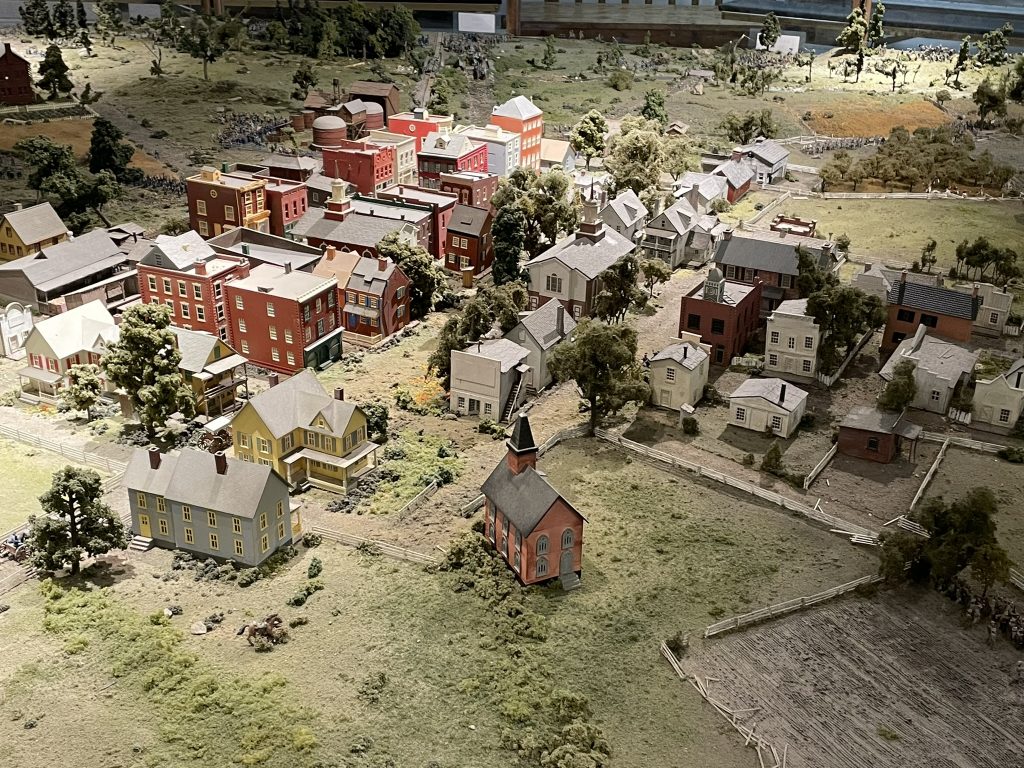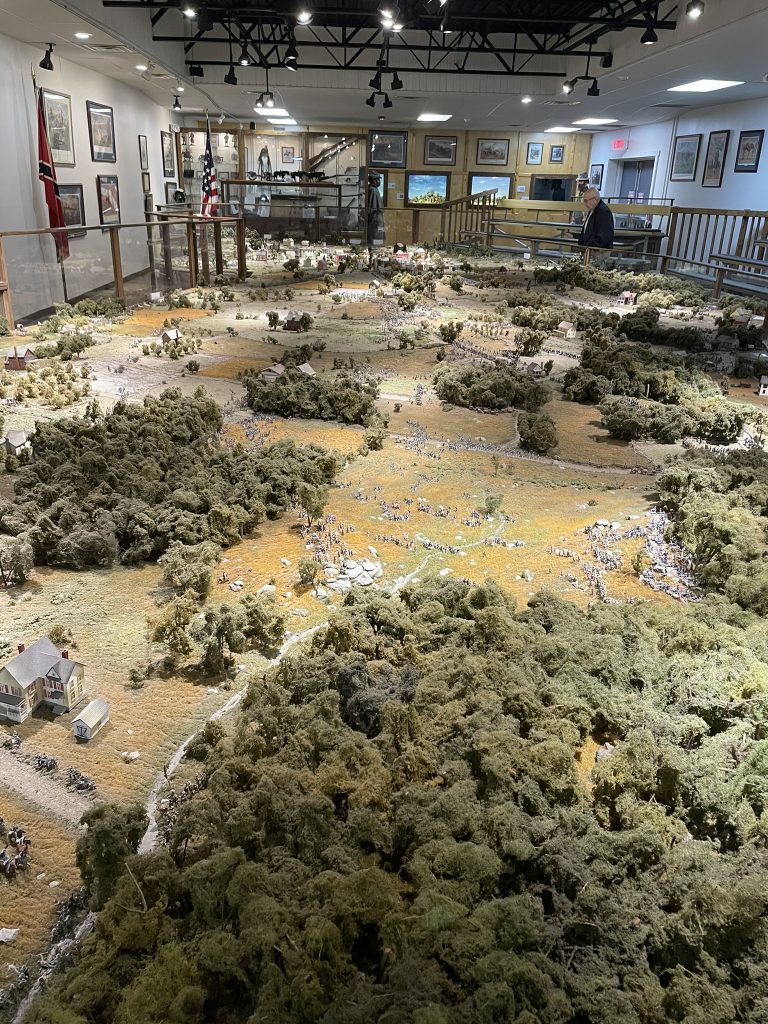Doug and I journeyed to Gettysburg to see Mountainfilm on Tour. This is something everyone who loves the outdoors should go to if they can. Telluride holds a film festival for outdoor films, and then puts some of them “on tour”; you get to see several short films (from a few minutes to a half hour or so, generally).
Similarly, there’s also the Banff Mountain Film Festival and Reel Rock. These three film tours are all interchangeable, as far as I’m concerned, except Banff has a lot more stops on their tour.
There’s always great music in these films; I almost always leave with a song or two to add to my playlist. This year’s song was Chasing Tomorrow, a collab between German up-and-comer CARSTN, renowned South African duo GoldFish and Alaskan singer-songwriter Anna Graceman.
We had two last venues we wanted to check off our Gettysburg list, so we went earlier in the day and made it happen. I said “I’m finally ready to say Gettysburg is done,” and then the very next day I saw an article about another “must see” museum, and I’m not sure I can. We’ll see.
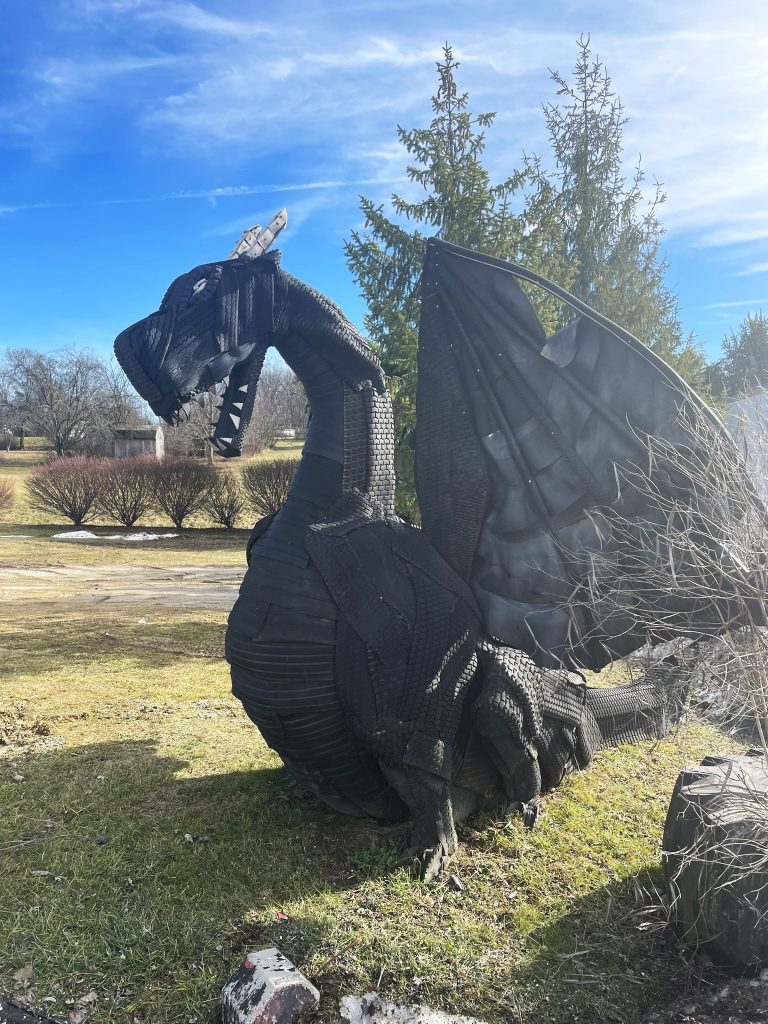
En route to Gettysburg we stopped at Breighner’s Tire Center in Littlestown to see tire art. Employee-Artist Noah Russell was asked to create a float for the Good Old Days parade in town, and used some tires that would otherwise have been trash and created a lion. He won first place!
The parade entry for the next year, an eight-foot-tall dragon that breathes fire, took Russell more than 100 hours to build, but he won first place again.
A Headless Horseman was the third parade entry, but this parade was canceled due to the pandemic.
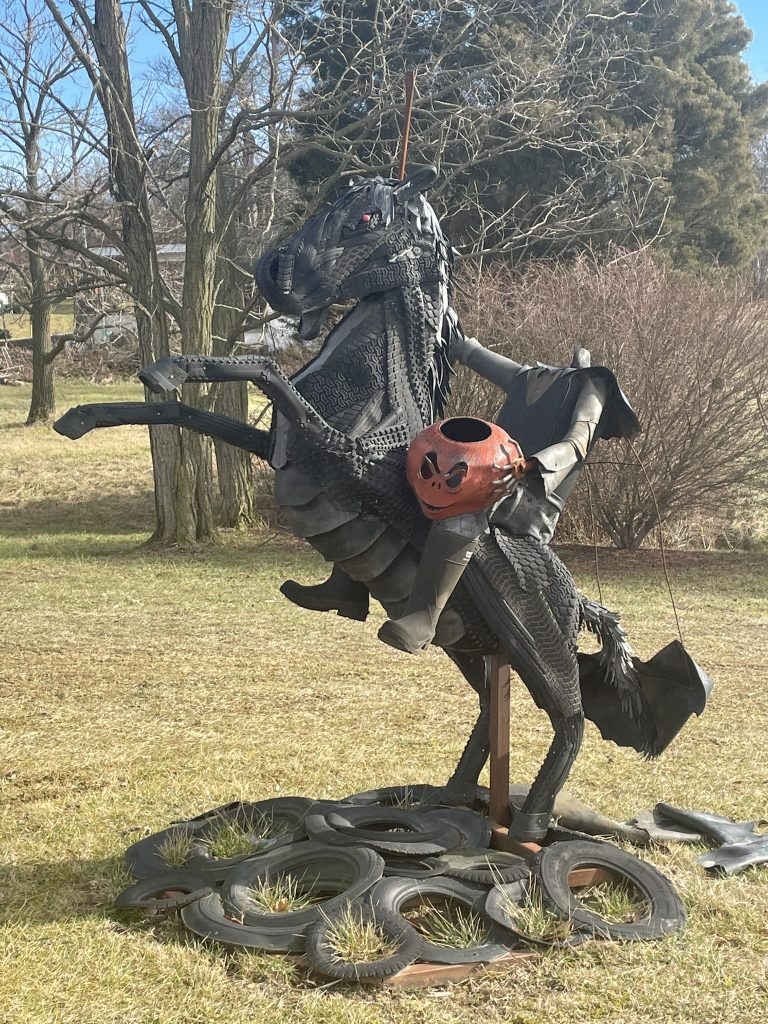
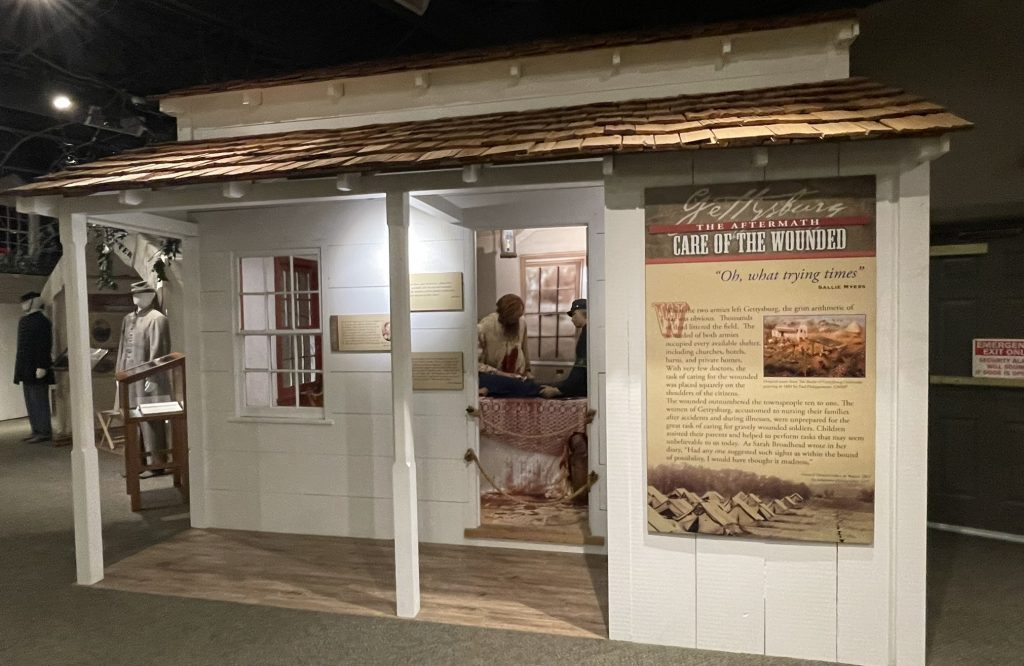
The Gettysburg Heritage Center includes a well-done 20-minute film that “takes an in-depth look at the three day battle, including the aftermath and the dedication of Gettysburg National Cemetery.”
Afterwards we went through the small museum, donning our 3-D glasses every so often to look at some pictures. At first I thought this was gimmicky, but it turns out that many of the original pictures taken during the Civil War were stereographs, and this is the way they were intended to be seen. It was very interesting to see the pictures pop to life.
The museum also had a “Cellar Experience”, where you get to sit in a cellar and listen to the war rage around you, as many of the Gettysburg citizens did during the three-day battle. This was not as interesting as I thought it might be.
At 51,000 casualties, Gettysburg saw the most dead and wounded of any Civil War battle. After the battle was over, dead horses and humans littered the fields, attracting vultures and spreading disease. Every available space was converted to use as field hospitals, with the wounded outnumbering the townspeople ten-to-one.
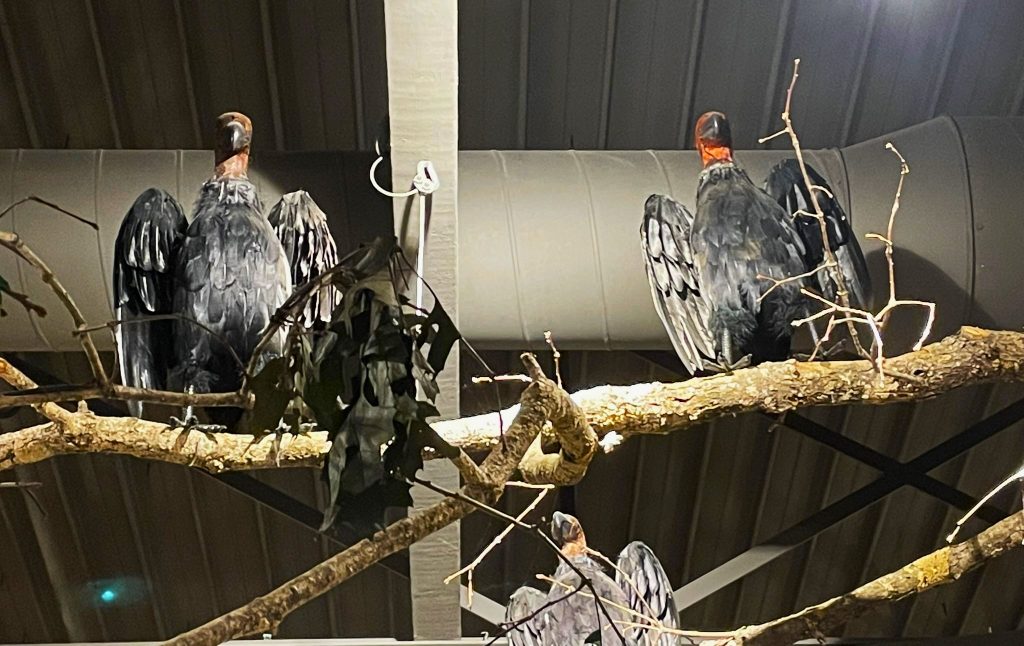
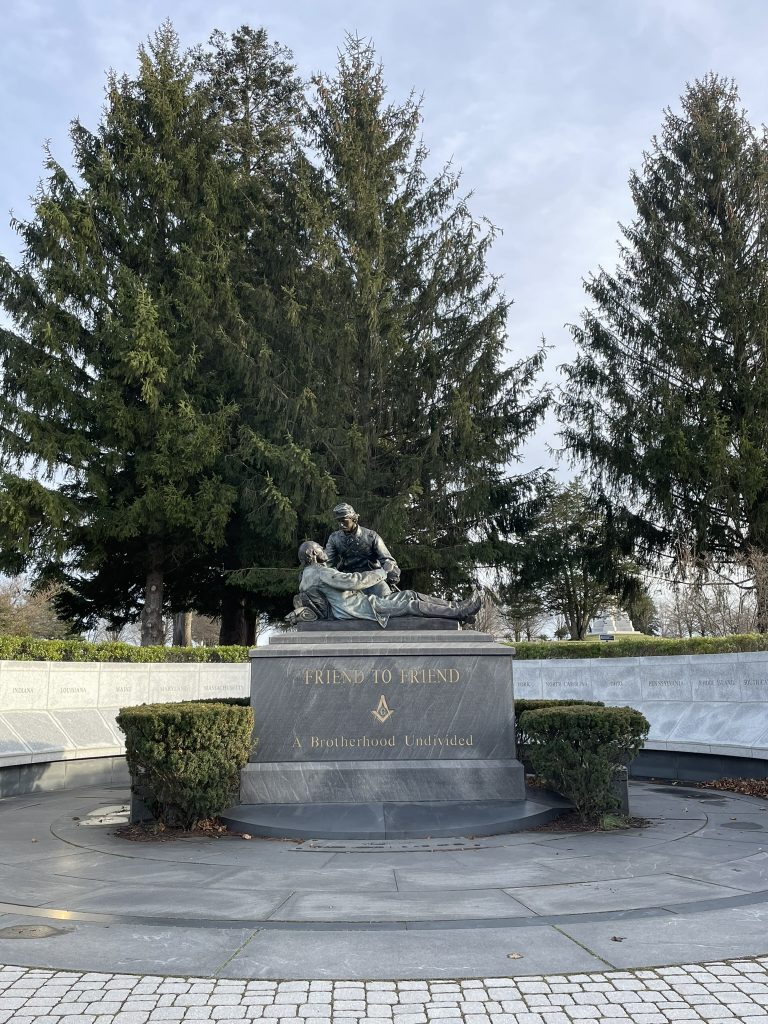
After our recent Masonic Lodge visits, we thought it only fitting to go see the Friend-to-Friend Masonic Memorial. The memorial was commissioned by the Grand Lodge of Pennsylvania and dedicated in 1993. It was the first time a private organization was permitted to erect a monument in a national park, requiring approval from Congress!
The monument depicts two Freemasons, Confederate Brigadier General Lewis A. Armistead and Union Captain Henry H. Bingham. Armistead was mortally wounded during Pickett’s Charge, and is attended by Bingham. The monument shows Armistead entrusting Bingham with his personal possessions so that they could be to his friend and fellow mason Union General Winfield Scott Hancock. Armistead succumbed to his injuries 2 days later.
The monument was very detailed (though after our Masonic Lodge visits, I expect nothing less), including a masonic emblem on the chain Armistead is handing to Bingham.
An article about the monument on gettysburgfreemasons.org describes it thus:
This story epitomizes some of the most time-honored virtues of Freemasonry and highlights the unique bonds of friendship, which enabled these men to remain brothers undivided. Even as they fought in a divided nation, they faithfully supported the respective governments under which they fought while seeking to help each other in their time of need.
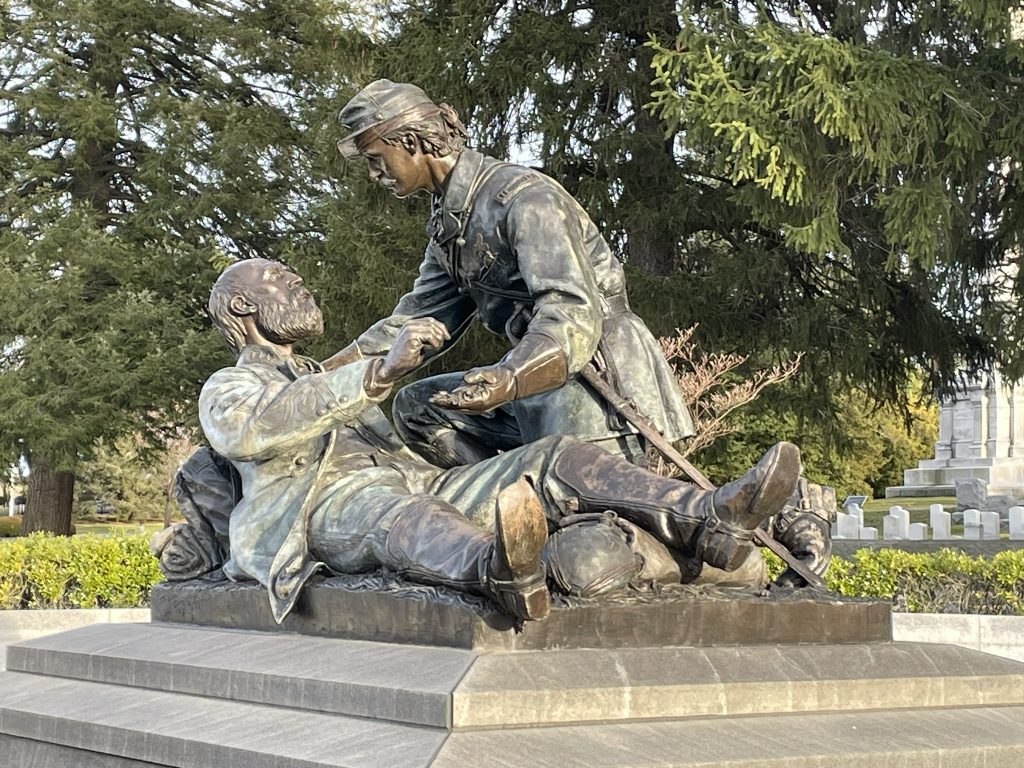
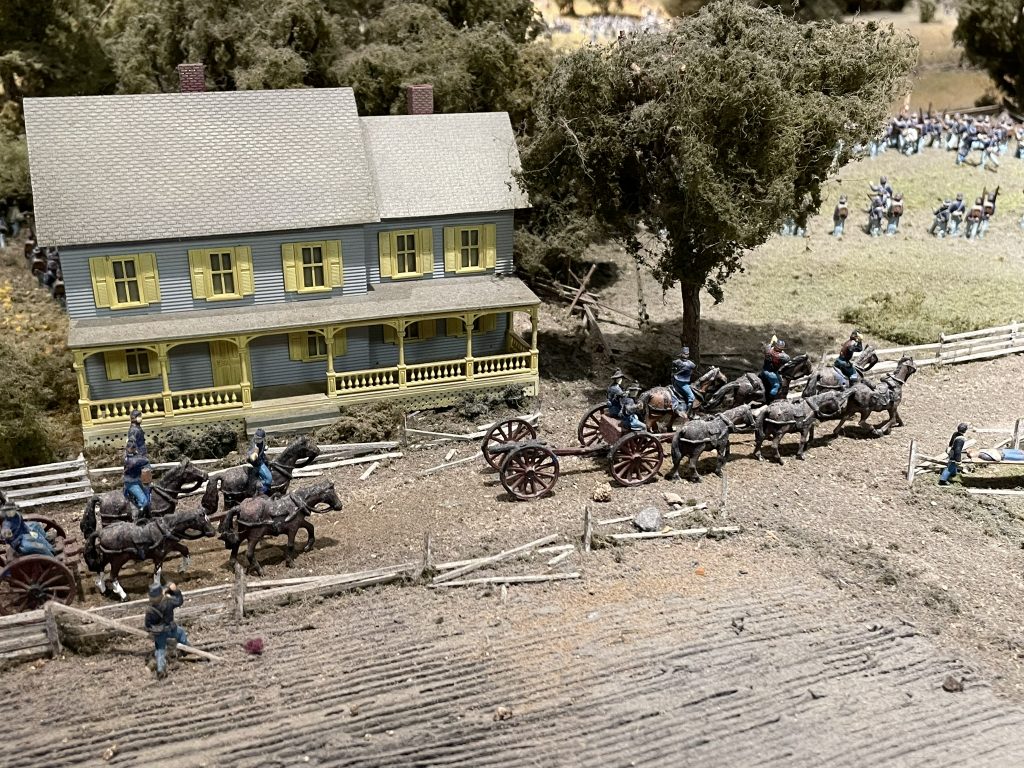
The Gettysburg Diorama has some small dioramas, some artifacts and paintings, and a large gift shop (get your confederate soldier costume here!), but the main attraction is a huge diorama (the largest military diorama in the US!) that shows the entire 6,000-acre battlefield.
It features more than 20,000 hand-painted soldiers, horses, cannons, and buildings. A half-hour show features narration of the three-day battle while light flashes over the areas the narration is covering.
Upon first entering, the epic diorama is impressive in scale and detail. However, we both found the show itself to be underwhelming. Part of the problem is that light flashes overhead onto the diorama, so it’s not really clear what is supposed to be illuminated; it would have been better if the light came from within the diorama itself. Films we’d seen elsewhere that show the troop movement and the infamous “fishhook” layout of troops did a better job explaining what happened.
The cover photo to this post is one of the miniature exhibits in the museum, showing General Mead’s Headquarters.
